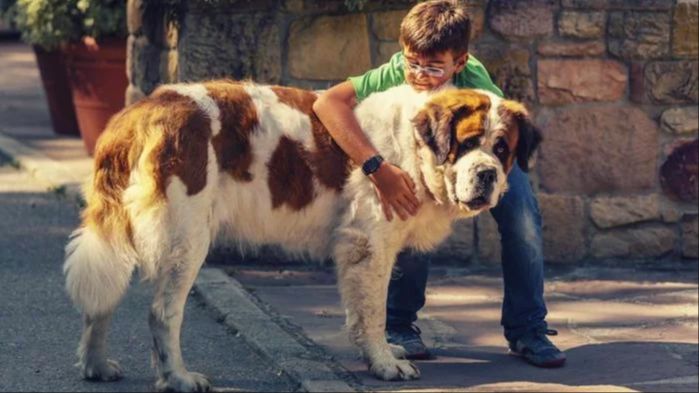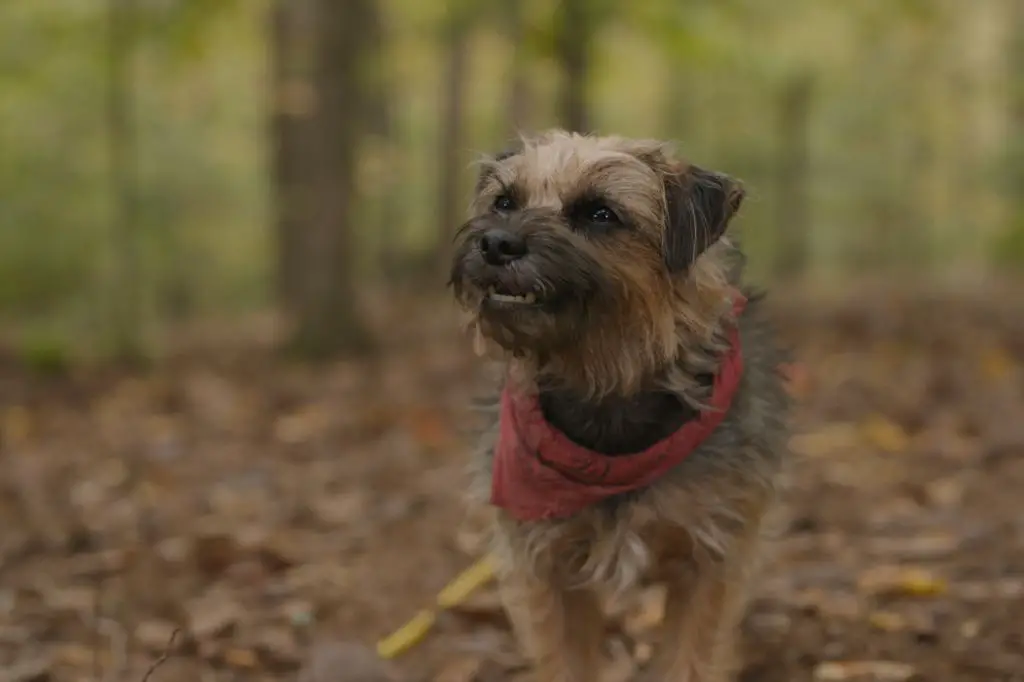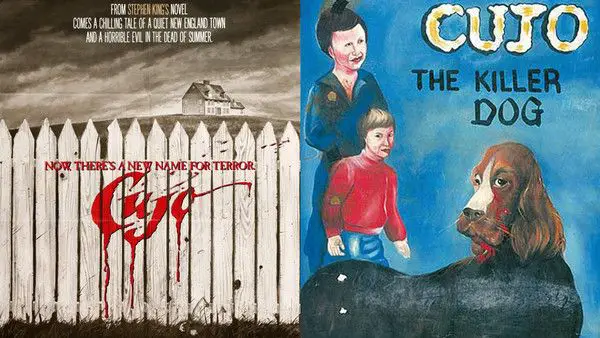Introduction
Cujo is a 1983 American psychological horror film based on Stephen King’s 1981 novel of the same name. It was directed by Lewis Teague and written for the screen by Don Carlos Dunaway and Lauren Currier. The film starred Dee Wallace, Danny Pintauro and Daniel Hugh Kelly. Cujo was about a friendly St. Bernard named Cujo who contracts rabies and conducts a reign of terror on a small American town (Wikipedia, 2022). The film was released by Warner Bros. and became the eighth highest-grossing horror film of 1983. Though the film received mixed reviews upon its release, it has since become regarded as one of the better film adaptations of King’s work.
Filming Locations
Most of Cujo was filmed on location in California. The principal filming location was a farmhouse in Petaluma, which was used for the home of the Trenton family in the film. According to https://giggster.com/guide/movie-location/where-was-cujo-filmed, the Camber family farm is located at Scott Ranch, on D Street in Petaluma. Scott Ranch is situated about 20 miles south of Santa Rosa, near Helen Putnam Regional Park.

Additional filming took place in and around Santa Rosa, California. The IMDb filming locations page indicates Santa Rosa was a primary production location for Cujo, along with Petaluma https://www.imdb.com/title/tt0085382/locations/. Rural areas outside of Santa Rosa were likely used for scenic driving sequences and external shots of the Camber farmhouse.
Use of Dogs on Set
The vicious dog Cujo in the 1983 film adaptation of Stephen King’s novel was ultimately played by five different St. Bernard dogs, along with a mechanical dog head prop and a stuntman in a dog costume for certain scenes (1). The dogs that played Cujo included:
- A female St. Bernard named Alberta
- Her son Beowulf
- Another female St. Bernard named Masha
- An unnamed puppy St. Bernard
- A male St. Bernard named Elvis
Trainers changed between the dogs depending on what was needed for each scene. The dogs playing Cujo had to snarl, bark ferociously, leap, chase, and dig. A mechanical St. Bernard head was also used for scenes when Cujo bites people. In the most dangerous stunts, a stuntman wore a Cujo dog costume (1).

In total, five different St. Bernard dogs played the role of the rabid Cujo throughout the filming of the movie. Their trainers worked closely with each one to elicit the aggressive behaviors needed on camera.
(1) https://www.imdb.com/title/tt0085382/trivia/
Training the Dogs
The majority of the dogs that appeared in Cujo were trained by Karl Miller, an experienced Hollywood animal trainer who had worked on films like The Birds and Benji. Miller was specifically brought onto Cujo because of his expertise in training Saint Bernards (Cujo.com).
According to Screen Rant, Miller trained five Saint Bernard dogs for the role of Cujo: Abbey, Chopper, Boris, Billy, and a stunt dog named Ted. The dogs went through obedience training and were taught specific actions like barking aggressively on command. Trainers would give commands from off-camera using hand signals, or hide in confined spaces like the Pinto to cue the dogs during filming (Screen Rant).
The American Humane Association was on set monitoring the animal action and ensuring the dogs were treated humanely. The AHA reported no animals were harmed during filming (Cujo.com).
On-Set Handlers
The use of multiple dogs to play Cujo required extensive coordination by experienced dog handlers on set. According to ScreenRant, five trainers worked with the dogs during filming – Karl Lewis Miller, Ray Berwick, Gary Gero, Steve Dunham, and plateaued Miller. Handlers were responsible for directing the dogs’ performances, ensuring their safety, and providing rewards like food and affection between takes. Having multiple handlers allowed the dogs to take breaks and rotate on camera. The dogs were high-energy and required constant monitoring to follow cues amidst fast-paced filming. Veteran trainer Karl Lewis Miller stated the dogs were worked “to death” with 14-18 hour filming days in summer heat, requiring cooling vests and shade breaks. Trainers aimed to create a positive experience, but the long hours took a toll.
Despite efforts by handlers, reports of animal mistreatment emerged after filming wrapped. The Humane Society investigated claims of harsh training methods, sedation, and unsafe conditions. Handlers defended practices as standard for the era, but acknowledged the grueling schedule impacted dogs’ wellbeing. While training and handling practices have evolved with greater focus on welfare, Cujo illustrated the intense demands placed on animal actors. Handlers bore responsibility for managing dog performances under stressful working conditions and tight timelines.
Stunt Dogs
Multiple Saint Bernard dogs were specially trained to perform stunts for the film Cujo. According to ScreenRant, five different dogs played the role of Cujo, with several used just for stuntwork and action sequences. Stunt dogs were utilized for scenes depicting Cujo attacking people and cars.
The main stunt dog for the film was named Mushroom. He was trained by Karl Lewis Miller to leap and snarl on command. In an interview with the New York Film Academy, Miller said Mushroom was “a seasoned pro” at age 11 and very obedient.

However, the stunt dogs did not perform all of the attacking scenes. For certain close-up shots and dangerous stunts, a mechanical Cujo head was used instead of a real dog, according to ScreenRant. This allowed filmmakers to depict Cujo biting and attacking without putting dogs or actors at risk.
CG Dogs
In addition to real dogs, the production team for Cujo utilized computer-generated imagery (CGI) and animatronic dogs to portray the rabid St. Bernard. According to Cujo: Every Animal (& Human) Used In The Stephen King …, several animatronic dogs were created by special effects artist R. Christopher Biggs to allow for more dangerous and aggressive scenes without putting real dogs at risk. These animatronic dogs were used for the more violent attack scenes.
CGI was a relatively new technology in 1983 when Cujo was filmed, but the production team did utilize some computer animation and visual effects to enhance certain scenes. The CG dogs allowed the filmmakers to show the rapid physical deterioration and snarling of Cujo in a way that would have been difficult and potentially unsafe to accomplish solely through practical effects with a live dog. However, the CGI was limited and used sparingly compared to a movie made today. The majority of Cujo’s screen time was still achieved through trained dogs and stunt work.
Mistreatment Controversy
There were some allegations that the dogs used in Cujo were mistreated during filming. According to Screenrant.com, the American Humane Association was on set monitoring the animal action and reported no mistreatment occurred[1]. The dogs were well trained and handled by professionals. Accusations of abuse came from unverified sources and were denied by the filmmakers and handlers. Though the content was dark, care was taken to ensure the dogs were not harmed during the simulated attack scenes.
Where Are They Now?
After filming ended, the dogs who portrayed Cujo went on to live relatively normal lives. The main dog who played Cujo was named O.J. and was described by trainers as a “sweetheart” off-camera. According to Karl Miller, the lead dog trainer for Cujo, O.J. lived a full life after retiring from acting and passed away at the age of 13 (1). Another dog named Abbey was also one of the main dogs who played Cujo, though she had a shorter stint on the project. Abbey wasadopted by her stunt trainer after filming and lived happily on their ranch (2).
While Cujo had a reputation as a horror icon, the dogs who played him were gentle giants who got lots of affection in their post-Hollywood lives. The animals were treated well on set, though the filming conditions were challenging given the nature of the aggressive role. After production wrapped, Cujo’s canine stars went back to being normal, loving pets.
Sources:
(1) https://www.reddit.com/r/todayilearned/comments/d21pxy/til_there_were_4_dogs_used_in_the_film_cujo_and/
(2) https://screenrant.com/cujo-every-animal-human-used-in-the-stephen-king-movie-explained/
Conclusion
In summary, Cujo was a 1980s horror film that made ingenious use of trained dogs to thrill and terrorize its audience. While as many as five Saint Bernards were used during filming, the dogs were treated ethically and humanely throughout the production. With the help of professional animal handlers and trainers, the canine actors delivered compelling performances that brought Stephen King’s novel to life on the big screen.

Though Cujo dealt with grim subject matter, at its core was a deep respect for the animals at the heart of the story. Their acting skills enthralled viewers and made movie history. Even decades later, Cujo remains one of the most memorable horror films featuring animal actors. It serves as a model for how to utilize animals in film safely and responsibly.
